




Do you often find spots on your clothes even after they’ve been through the washing machine? This can be frustrating, especially when you’re trying to maintain a clean and tidy wardrobe. However, these mysterious spots can have various causes, and understanding them is the key to preventing their appearance in the future.
One common reason for spots on clothes after washing is the presence of residual detergent. While you may think that more detergent means cleaner clothes, using too much can actually have the opposite effect. Excess detergent can leave behind a soapy residue on your clothes, which can result in those unsightly spots. It’s important to always follow the recommended dosage of detergent for your particular washing machine and the size of your load.
Another reason for spots on clothes is the accumulation of fabric softener or dryer sheets. While these products are designed to make your clothes soft and reduce static, using too much or not properly rinsing them off can lead to spots. Fabric softener and dryer sheets can leave behind a waxy residue that clings to your clothes, creating those stubborn spots that won’t come off in the wash.
A lesser-known reason for spots on clothes after washing is the presence of hard water minerals. If your water supply has a high mineral content, such as calcium and magnesium, it can leave behind deposits on your clothes. These deposits can appear as small white spots or streaks and are especially noticeable on dark-colored clothes. To combat this issue, consider using a water softening system or adding a water conditioner to your laundry cycle.
Common Causes of Spots on Clothes after Washing
There are several common causes of spots on clothes after washing. Understanding these causes can help you identify and resolve the issue.
1. Detergent Residue
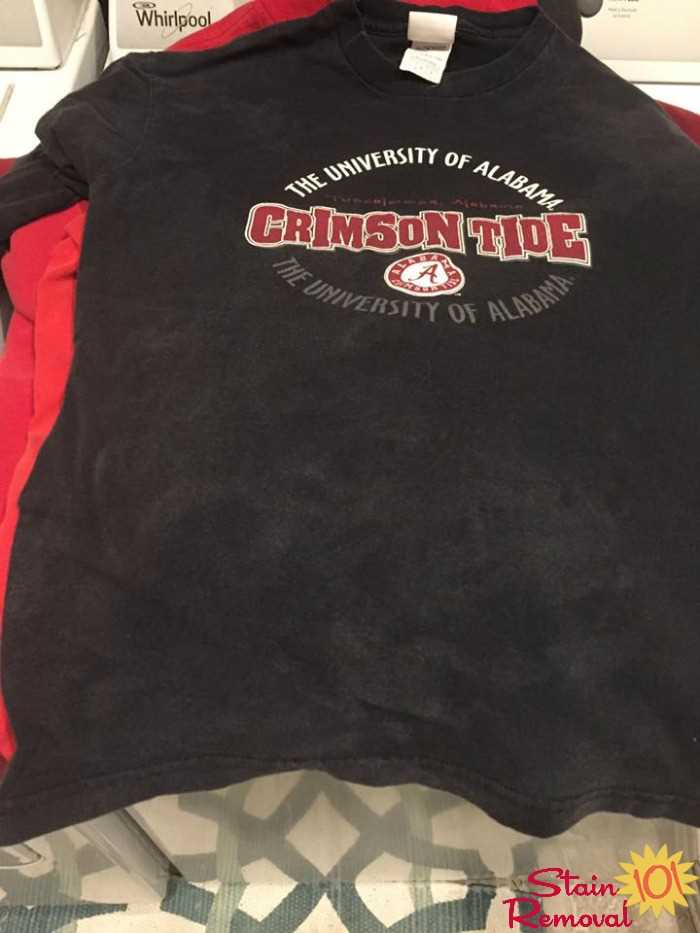
One common cause of spots on clothes after washing is detergent residue. This can happen if you are using too much detergent or if the detergent does not dissolve properly during the wash. The residue can leave behind spots on your clothes, especially on dark-colored fabrics. To avoid this, make sure you are using the recommended amount of detergent and consider using a liquid detergent, as it tends to dissolve better.
2. Fabric Softener Stains
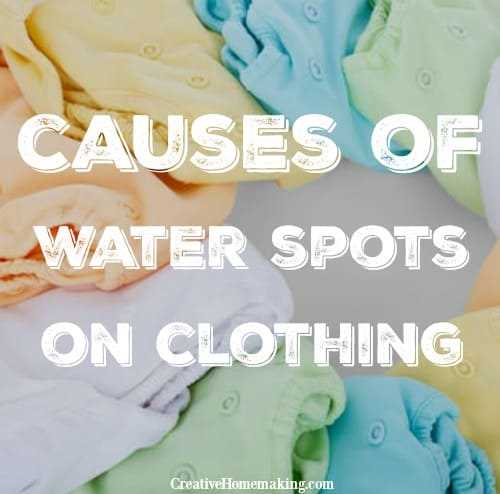
Fabric softener can also cause spots on clothes. If you add fabric softener directly to the washing machine or use too much, it may not fully rinse out, leaving behind stains on your clothes. To prevent this, follow the instructions on the fabric softener bottle and consider using less or diluting it with water before adding it to the washer.
3. Hard Water Deposits
If you live in an area with hard water, it could be causing spots on your clothes. Hard water contains minerals such as calcium and magnesium that can leave behind deposits on fabric, resulting in stains. Using a water softener or adding a water softening product to your wash can help prevent this issue.
4. Stains That Were Not Pre-Treated

Sometimes, spots on clothes after washing are simply stains that were not properly pre-treated before washing. If you have a stain on your clothes, it is important to pre-treat it with a stain remover or detergent before washing. This helps break down the stain and increase the likelihood of it being completely removed during the wash.
5. Washer or Dryer Issues
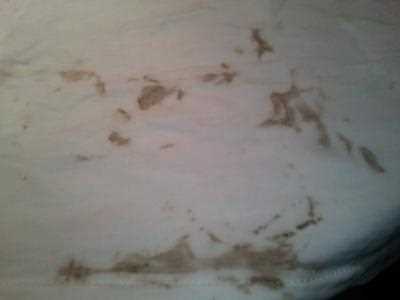
In some cases, spots on clothes after washing can be caused by issues with the washer or dryer itself. If the washing machine’s drum is dirty or if there is a buildup of detergent or fabric softener inside, it can transfer onto your clothes. Similarly, a malfunctioning dryer or dirty dryer drum can also cause spots. Regularly cleaning your washer and dryer can help prevent these issues.
Conclusion
By understanding the common causes of spots on clothes after washing, you can take the necessary steps to prevent and resolve this issue. From adjusting detergent usage to properly pre-treating stains, ensuring the cleanliness of your washing machine and dryer, and addressing hard water problems, you can keep your clothes spot-free and looking their best.
Inadequate Pre-Treatment of Stains
One of the main reasons behind spots on clothes after washing is inadequate pre-treatment of stains. It is important to properly treat and remove any stains on clothing before washing them in order to prevent spots from appearing.
Here are some common mistakes people make when pre-treating stains:
- Delaying the pre-treatment: Leaving stains untreated for too long can make them more difficult to remove. It is best to treat stains as soon as possible to increase the chances of successful removal.
- Using the wrong stain remover: Different types of stains require different types of stain removers. Using the wrong stain remover may not effectively remove the stain, resulting in spots on the clothes after washing. It is important to identify the type of stain and use an appropriate stain remover.
- Insufficient stain remover application: Applying too little stain remover may not fully eliminate the stain, leaving behind residue that can cause spots. It is important to apply enough stain remover to fully saturate the stain.
- Not following the instructions: Many stain removers have specific instructions on how to effectively remove stains. Not following these instructions can result in inadequate pre-treatment and spots on clothes after washing.
- Not testing the stain remover: Before applying a stain remover to the entire stain, it is recommended to test it on a small, inconspicuous area of the fabric to ensure it does not cause any damage or discoloration.
By avoiding these mistakes and properly pre-treating stains, you can help prevent spots from appearing on clothes after washing. Remember to act quickly, choose the right stain remover, apply it generously, follow the instructions, and test it beforehand.
Residual Soap or Detergent Buildup
One common reason for spots on clothes after washing is residual soap or detergent buildup on the fabric. This can happen due to various reasons, such as using too much detergent, not rinsing the clothes properly, or using a detergent that does not dissolve completely.
Signs of Residual Soap or Detergent Buildup
- White, powdery spots on clothes
- Stiff or scratchy fabric
- Unpleasant odor on clothes even after washing
Causes of Residual Soap or Detergent Buildup
- Using Too Much Detergent: Overdosing on detergent can leave behind residue on clothes. It is important to follow the manufacturer’s instructions and use the recommended amount of detergent.
- Inadequate Rinsing: Insufficient rinsing can result in soap or detergent particles remaining on the fabric. This can happen if the washing machine does not have a proper rinse cycle or if the water is not draining properly.
- Detergent Not Dissolving Completely: Some detergents may not dissolve completely in water, especially in cold water or hard water conditions. This can lead to residue buildup on clothes.
Preventing Residual Soap or Detergent Buildup
- Use the correct amount of detergent as recommended by the manufacturer.
- Ensure that the washing machine has a proper rinse cycle and that the water drains effectively.
- If using cold water, dissolve the detergent in a small amount of warm water before adding it to the washing machine.
- Consider using a detergent specifically designed for cold water or hard water conditions.
- Regularly clean the washing machine to remove any soap scum or residue.
Removing Residual Soap or Detergent Buildup
If you notice spots on your clothes due to residual soap or detergent buildup, here are some steps you can take to remove the buildup:
- Re-wash the affected clothes using the correct amount of detergent and an extra rinse cycle.
- Soak the clothes in a solution of white vinegar and water for about 30 minutes before rewashing.
- Use a fabric softener or laundry booster specifically designed to remove residue.
- If the buildup is stubborn, consider using a specialized laundry detergent or stain remover designed to tackle residue.
By following these preventive measures and taking appropriate action to remove any residue, you can effectively eliminate spots on clothes caused by residual soap or detergent buildup.
Hard Water Mineral Deposits
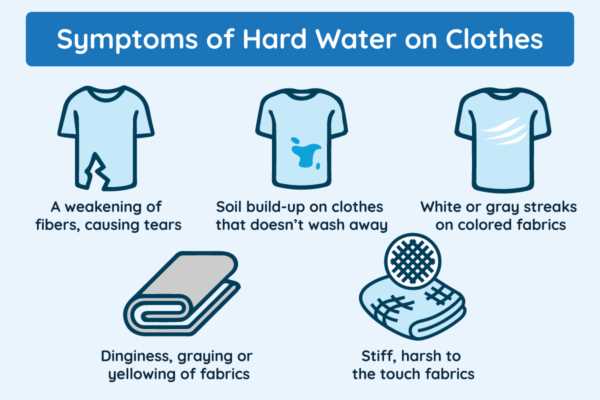
Hard water contains high levels of minerals such as calcium, magnesium, and iron. When this water is used for washing clothes, it can leave behind mineral deposits on the fabric, which can appear as spots or discoloration.
These mineral deposits are particularly noticeable on dark-coloured clothes, as they can leave a white or grayish residue. The minerals in hard water can also react with laundry detergents and form soap scum, further complicating the issue.
To determine if hard water is the culprit behind the spots on your clothes, you can perform a simple test. Wet a small piece of fabric with water and add a few drops of laundry detergent. Rub the fabric together vigorously for a few minutes and rinse. If you notice any residue or spots on the fabric after drying, it is likely a result of hard water mineral deposits.
Removing Hard Water Mineral Deposits
If you have confirmed that hard water is causing spots on your clothes, there are several methods you can try to remove the mineral deposits:
- Vinegar: Add one cup of white vinegar to the washing machine during the rinse cycle to help break down and remove mineral deposits.
- Lemon Juice: Similar to vinegar, lemon juice can also help remove mineral deposits. Add half a cup of lemon juice to the rinse cycle.
- Water Softeners: Consider installing a water softener system in your home to prevent the formation of mineral deposits in the first place.
It’s also essential to regularly clean your washing machine to remove any built-up mineral deposits that may be affecting the quality of your laundry. Follow the manufacturer’s instructions for cleaning your specific washing machine model.
Lastly, using a laundry detergent designed for hard water can also help prevent mineral deposits from forming on your clothes. Look for detergents labeled as “hard water optimized” or “for hard water use.”
Improper Sorting of Laundry
One common reason for spots on clothes after washing is improper sorting of laundry. Sorting your laundry correctly is crucial to ensure that all items are cleaned effectively without any damage or staining.
Sorting by Color:
It is essential to sort your laundry by color to prevent color bleeding. Brightly colored fabrics can release dye during the wash cycle, which can stain lighter-colored garments. Separate your laundry into darks, lights, and whites to minimize the risk of color transfer.
Sorting by Fabric Type:
Sorting your laundry by fabric type is important to prevent damage. Delicate fabrics, such as silk or lace, should be washed separately from heavier fabrics like denim or towels. Mixing different fabric types can result in pilling, tearing, or stretching, which may lead to spots or damage on your clothes.
Sorting by Level of Dirtiness:
If you have heavily soiled items, it is best to wash them separately or with other heavily soiled items. This will prevent dirt or stains from transferring to cleaner garments. Sorting your laundry based on the level of dirtiness will help ensure that each item gets the appropriate cleaning treatment it needs.
Suggested Sorting Method:
Here is a suggested method for sorting your laundry:
- Separate dark-colored items from light-colored items.
- Further separate whites from lights if desired.
- Separate delicate or fragile fabrics from heavier fabrics.
- Sort heavily soiled items separately from lightly soiled ones.
- Check clothing labels for specific instructions and sort accordingly.
Conclusion
Properly sorting your laundry is essential to prevent spots on clothes after washing. By sorting your laundry by color, fabric type, and level of dirtiness, you can minimize the risk of staining or damaging your garments. Following a suggested sorting method can help ensure that each item is cleaned effectively and keeps your clothes looking their best.
Washing Machine Malfunctions
Washing machine malfunctions can often be the cause of spots on clothes after washing. It is important to identify and fix these issues to ensure that your clothes come out clean and spot-free.
1. Clogged or Dirty Filters
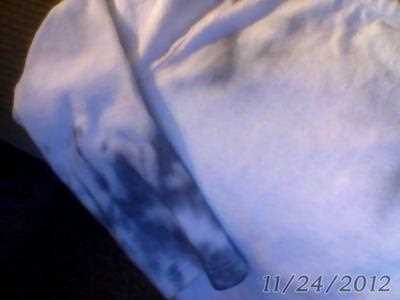
One common issue that can lead to spots on clothes is clogged or dirty filters. The filters in your washing machine help to remove lint and debris from the water. Over time, these filters can become clogged with lint, dirt, and other particles, leading to spots on your clothes. Cleaning or replacing the filters regularly can help prevent this issue.
2. Detergent Dispenser Problems
If your washing machine has a detergent dispenser, it is essential to ensure that it is working correctly. Problems with the dispenser can lead to improper distribution of detergent, resulting in spots on clothes. Make sure to clean the dispenser regularly and check for any clogs or malfunctions.
3. Overloading
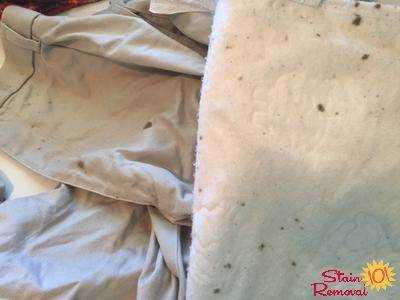
Overloading your washing machine can also cause spots on clothes. When clothes are crammed too tightly into the machine, water and detergent may not be able to reach all areas, causing some spots to remain. Make sure to follow the manufacturer’s guidelines for loading capacity to avoid this issue.
4. Hard Water Buildup
If you have hard water, mineral deposits can build up in your washing machine over time. This can lead to spots on clothes. Using a descaling agent or vinegar regularly can help remove these deposits and prevent spots.
5. Agitator or Drum Issues
Issues with the agitator or drum in your washing machine can also cause spots. If the agitator is not functioning correctly or if there are rough spots on the drum’s surface, clothes may rub against them and get damaged. Regular maintenance and inspection of these components can help prevent this problem.
Identifying and addressing these common washing machine malfunctions can help prevent spots on clothes after washing. Regular maintenance, cleaning, and following manufacturer guidelines are crucial to keep your washing machine in optimal condition.
FAQ
Why do I get spots on my clothes after washing?
The most common reason for spots on clothes after washing is detergent residue. When detergent doesn’t dissolve completely or is not rinsed out properly, it can leave behind white or colored spots on the clothes. Hard water can also contribute to this issue.
How can I prevent getting spots on my clothes after washing?
To prevent spots on clothes after washing, make sure to use the correct amount of detergent according to the load size. Use a high-quality detergent that dissolves easily. It is also recommended to run an extra rinse cycle to ensure all the detergent is rinsed out. Additionally, using a water softener or vinegar in the wash can help counteract the effects of hard water.
What should I do if I notice spots on my clothes after washing?
If you notice spots on your clothes after washing, the first step is to identify the cause. If it’s detergent residue, you can try rewashing the clothes using less detergent or running an extra rinse cycle. For hard water spots, you can use a water softener or vinegar in the wash. If the spots persist, it may be worth checking your washing machine for any issues or consulting a professional.
Are there any other reasons for spots on clothes after washing?
Yes, there can be other reasons for spots on clothes after washing. Fabric softener residue, dryer sheet residue, and certain stain removers can also cause spots on clothes. It’s important to read the labels and instructions on these products and use them as directed. Additionally, some fabrics are more prone to showing spots or stains, so it’s important to take care when washing and drying them.














